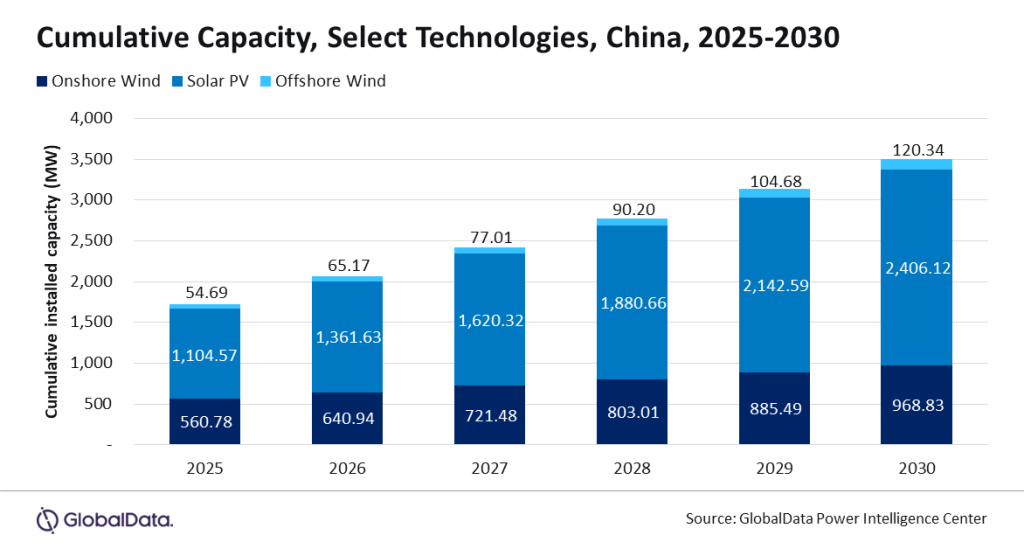China to reach solar and wind target ahead of 2030 target China may be ahead of schedule as it is projected to reach solar and wind power capacity of 1,720 gigawatts (GW) by 2025, surpassing 2030 target at more than 500 GW, according to a GlobalData report.
GlobalData noted that China’s solar photovoltaic (PV) capacity reached 609.5 GW in 2023, while its onshore and offshore wind capacity stood at 408.1 GW and 37.7 GW, respectively.
“The country is on track to exceed its 2030 target by a significant margin, achieving this milestone five years ahead of schedule in 2025. By that year, the cumulative capacity of solar photovoltaics, onshore wind and offshore wind is anticipated will reach 1,104.6 GW, 560.8 GW and 54.7 GW, respectively,” he explained.
In its report “China Energy Market Size, Trends, Regulations, Competitive Landscape and Forecast, 2024-2035,” GlobalData said financial incentives and political support are among the main drivers that helped China advance its goals. energetic.

Solar photovoltaics will remain the dominant source of renewable energy until 2035, he added.
Despite this development, Sudeshna Sarmah, energy analyst at GlobalData, said China remains heavily dependent on thermal energy, which presents two challenges.
First, pollution from coal-based generation has contributed to China’s cities being among the most polluted in the world. Secondly, domestic coal production is declining even as energy demand increases,” Sarmah said.
Beijing is addressing these issues by improving renewable energy generation. However, the problem of insufficient network infrastructure increases.
While significant investments will be needed, it will be crucial for China to develop new transmission lines and a comprehensive smart grid capable of reconciling the variable nature of renewable energy supply with consumer demand, GlobalData said.
“Transitioning to a decentralized approach can replace the existing centralized planning process, encouraging more agile decision-making. It is imperative that the government prioritizes the development of grid infrastructure and the advancement of energy storage systems, with the aim of gradually decreasing its dependence on thermal energy,” Sarmah said.